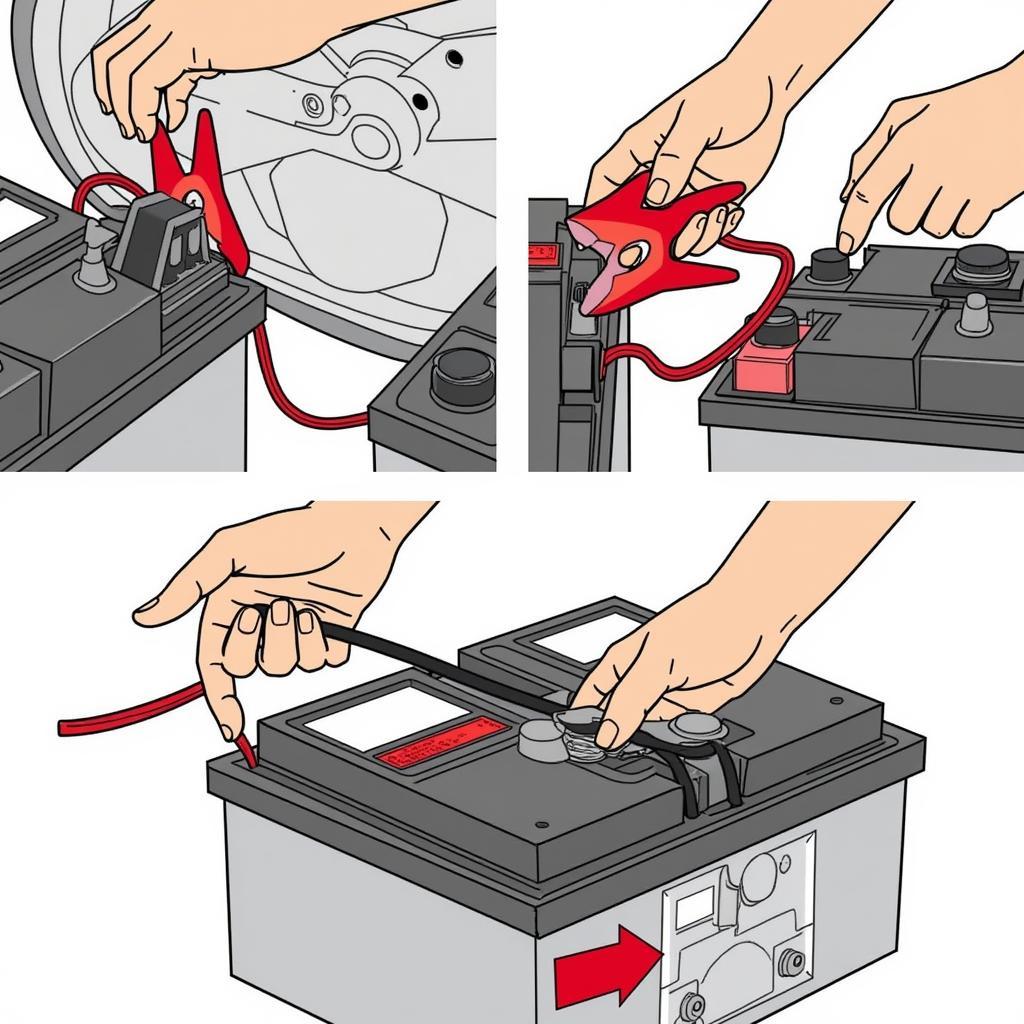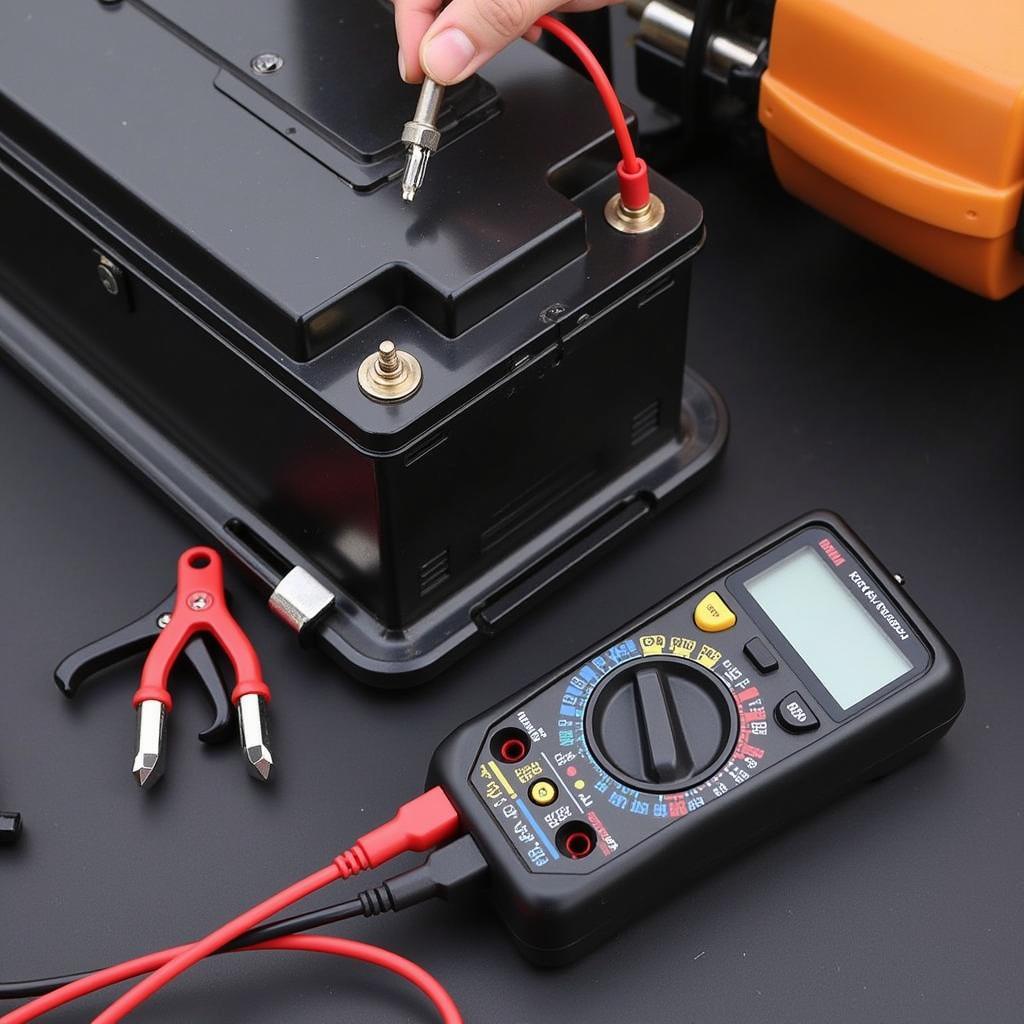A dead car battery is a common and frustrating problem. This guide provides practical advice and expert insights to help you keep your car battery from dying, covering everything from preventative maintenance to troubleshooting common issues.
Understanding your car battery’s health is crucial for a smooth and reliable driving experience. Similar to symptoms of battery going bad, a dying battery can manifest in various ways, impacting your vehicle’s performance and your daily commute.
Why Car Batteries Die
Several factors can contribute to a car battery’s demise. Extreme temperatures, both hot and cold, can significantly impact battery performance. Parasitic drains, where electronic components continue to draw power even when the car is off, can gradually deplete the battery. Leaving lights on, short trips that don’t allow the alternator to fully recharge the battery, and old age are other common culprits. Additionally, a malfunctioning alternator can prevent the battery from charging properly.
Preventing a Dead Car Battery
Regular maintenance is key to preventing a dead battery. Testing your battery regularly with a multimeter can help you track its health. Keeping the battery terminals clean and free of corrosion is also essential. Limiting short trips and ensuring your alternator is functioning correctly can prolong your battery’s lifespan. Furthermore, be mindful of accessories that might drain your battery, such as aftermarket stereos or interior lights.
“Regular battery testing is like a check-up for your car’s heart. It allows you to catch potential problems early and prevent unexpected breakdowns,” says automotive electrical engineer, David Miller.
Troubleshooting a Dead Battery
If your battery is dead, jump-starting can be a temporary solution. However, simply jumping the battery without addressing the underlying cause won’t solve the problem long-term. If your car won’t start after a jump, further diagnosis is necessary. This may involve checking the alternator, starter, or other electrical components. Remote diagnostics and software programming can sometimes resolve complex issues, providing a convenient and efficient solution. It’s always best to consult a qualified technician if you’re unsure about the cause of the problem.
 Jump Starting a Car Battery Safely
Jump Starting a Car Battery Safely
Extending Your Battery’s Life
Aside from regular maintenance, there are other steps you can take to extend your battery’s life. Parking your car in a garage, especially during extreme weather, can shield the battery from temperature fluctuations. Minimizing the use of accessories when the engine is off can also help conserve battery power. Knowing issues with car battery will save you much time and money.
“Just like any other component in your car, your battery requires care and attention. By following these simple steps, you can maximize its lifespan and avoid the inconvenience of a dead battery,” advises automotive expert, Sarah Johnson.
How to Test Your Car Battery
Testing your car battery is a straightforward process. You can use a multimeter to measure the voltage. A fully charged battery should read around 12.6 volts. A reading below 12 volts indicates a low charge. You can also have your battery tested at an auto parts store.
 Testing Car Battery with Multimeter
Testing Car Battery with Multimeter
How Often Should I Replace My Car Battery?
Most car batteries last between three and five years. However, various factors, such as driving habits and climate, can affect its lifespan. It’s a good idea to have your battery tested annually, especially if it’s older than three years. If you are looking for information on how to replace the battery for your key fob, you can check out 2013 ford escape key fob battery. For general low battery issues you can check car battery low. You also may want to see car wont start after jumping battery if you continue to have issues after a jump.
Conclusion
Keeping your car battery from dying requires a proactive approach. By understanding the factors that contribute to battery failure and following the preventative maintenance tips outlined in this guide, you can significantly extend your battery’s life and avoid the frustration of being stranded with a dead battery. Regular maintenance and timely troubleshooting can keep your car running smoothly and reliably.

